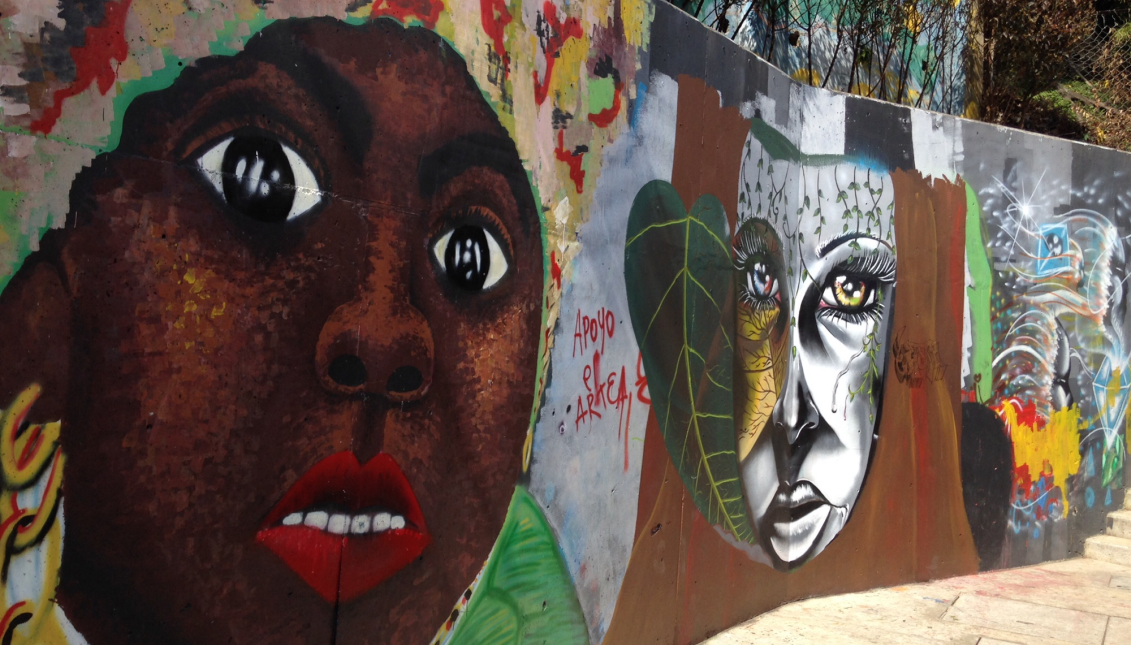
Op-Ed: Learning from Colombia
MORE IN THIS SECTION
One of the first theory books I read in graduate school, which became sort of my theoretical bible, was Learning from Las Vegas by Robert Venturi and Denise Scott Brown.
As it sometimes happens in Philadelphia, these two world-renown architects have been often ignored in their native city. I also thought that Las Vegas was an unusual place to learn from, just like Colombia might be to the contemporary traveler. In fact, Americans have lots to learn from Colombia, starting with the spelling of this country (not Columbia like the university).
Bogotá is a large metropolis of more than eight million inhabitants. Nestled next to the Andes at an altitude of 8,600 feet, it looks even better from a distance than up-close. The drive from El Dorado Airport to the hotel was congested, although the limo driver said we were lucky not to have a trancón, a traffic jam.

One way to handle traffic problems, is to restrict cars by the number on their license plates: even-numbered cars can only be driven some days and odd-numbered ones, the other days. Of course, some wealthy and clever families can afford to have two cars and drive everyday. Motorcycles are very popular, especially with the younger crowd who can’t afford a car. Interestingly, there are rules for motorcycles too. Their license numbers have to be displayed on the helmets. Thus the police can tell immediately if a motorcycle has been stolen.
Fortunately, there is not jet lag flying south to Colombia, since it is enough to adjust to the soroche, the altitude sickness. On a brisk walk the first morning, I could appreciate some of the innovations implemented in this modern city. Many of the streets of the Zona Rosa, the high-class neighborhood where we stayed, are pedestrian walkways with wonderful restaurants, boutiques and shopping malls. One of the advantages of traveling in Colombia, where tourism is not prevalent, is that mid-priced groups like Road Scholar can afford to stay in first-class hotels.
The neighborhoods of Bogotá are strictly classified by six economic levels. Most people prefer to live in 3-4 areas because utilities and other services are less expensive than living in the highest and richest 5-6. It’s a given that the higher economic zones of the city subsidize the poorer ones.
Since the official end of the armed conflict in 1984, when the FARC (Revolutionary Armed Forces of Colombia) signed the first peace agreement, Colombia has spent millions on infrastructure. The roads from Armenia to Medellin, through the fertile mountain valleys of the coffee region, are mostly state of the art, with excellent bridges, tunnels and roadside rest-stops that made me forget about the New Jersey Turnpike.
Medellin is by far the most innovative of the cities we visited, perhaps because it had the most rebuilding to do. The drug cartels, led by Pablo Escobar, caused endless violence and major poverty in this area. The center of the city is still surrounded by very poor comunas or communities, clinging on the side of every available hillside. Comuna 13 was one of the hardest hit and now is one of the most thriving.
The municipal government has built six escalators with gardens at either side, covered by elegant bright orange canopies, reminiscent of Central Park when Christo draped it with orange flags. It helps that Medellin’s weather is eternal spring-like, with 70 degree-weather year-around. The residents of comuna 13 have painted artistic murals on every available surface similar to the ones from the Mural Arts Program in Philadelphia. Medellin has also constructed a modern subway and cable car system that can move its citizens to the center of the city. Presto, the poorest people have access to better jobs in this amazing metropolis.

As in other parts of Colombia, crime in Medellin is down significantly. There are many incentives to keep people safe. For example, there is free Internet in all public squares and a system of bright red phone cabins with the Mejores Juntos (better together) logo that anyone can use to call for help. The city is thriving with universities, museums, libraries, theaters and sports centers.
Even for a single woman like me, it felt safe enough to venture out alone. It helped that Spanish is my native language. As in most countries, it’s important to take precautions or what Colombians call no dar papaya, not be an easy target. Only in some of the remote areas of the country not accessible to tourism, bordering with Brazil and Ecuador, there are still some safety concerns.
Our final destination was Cartagena de Indias on the Caribbean Coast, a World Heritage Site known for the beauty of its colonial architecture and historic preservation. This part of Colombia has already been invaded by the tourists and is crowded and expensive. I remember Cartagena, on the Mediterranean, in my native Spain. These two namesake cities are similar, with their cozy harbors and strong ocean breezes.
Being a Spaniard makes for interesting situations while traveling in Latin America; in countries like Peru, I feel the six-century-old hostility the moment I speak with my Castilian accent. Supposedly, Colombians speak the most beautiful Spanish in the world and after my visit, I have to admit that they do. Colombians are polite, correct and consistently friendly. I hope their attitude toward tourists does not change when this country gets “discovered.”
Even the young are almost old-fashioned and formal. Take Ileana, a young woman I met in Medellin´s metro. She didn’t look a day over twenty, although she already had four daughters. She was attending a Saturday session at the University. This was her last semester for an undergraduate degree in Spanish Education. She was worried that she wouldn’t find a good job, since she didn’t have much work experience. When I had to get off, I knew what to say in the proper Colombian way instead of a more casual goodbye: Qué Dios te bendiga, may God bless you. Lesson learned!






LEAVE A COMMENT:
Join the discussion! Leave a comment.